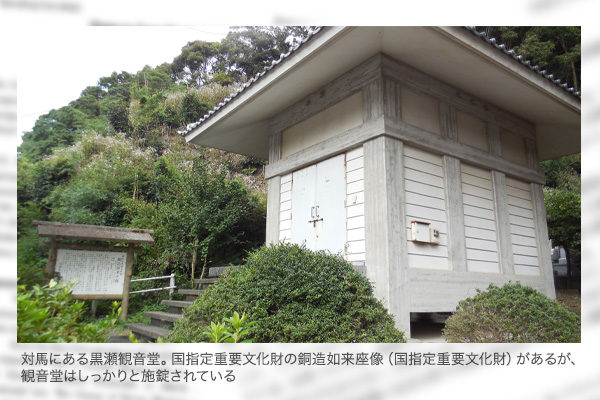On February 1, South Korea’s Daejeon High Court reversed a lower court ruling, rejecting a South Korean temple’s ownership of a Buddhist statue that had been stolen from a Japanese temple and is now taken custody of by the South Korea government.
The seated statue of the Kanzeon Bodhisattva, designated by Japan’s Nagasaki Prefecture as a tangible cultural asset, was stolen by South Korean thieves from Kannonji temple in the prefecture’s Tsushima Island in October 2012. The thieves were arrested by South Korean police following year, with the statue recovered. However, Buseoksa temple in South Chungcheong province claimed its ownership, asserting that the statue was looted in the 14th century by Japanese pirates called “wako.” The South Korean temple filed an appeal with the Supreme Court against the high court decision on February 10.
Japan has protected instead of looting cultural assets
The theft from Kannonji temple was nothing new as there were other cases where South Korean thieves stole Buddhist statues from Japan and sold them. The fact that "wako” pirates in the 14th century were taken up in a modern-day trial is surprising. A more serious problem for Japan, however, is that the Daejeon High Court failed to deny the statue had been looted by the pirates. Its ruling recognized Kannonji temple’s ownership of the statue only for the reason that the Japanese temple had obtained acquisitive prescription under both countries’ civil laws.
South Koreans tend to think Japan looted or prejudiced Korean cultural assets. The timing of the atrocities are said to be during the “wako” pirate attacks, Toyotomi Hideyoshi’s invasion in the 16th century and Japan’s annexation in the early 20th century. Koreans are also conscious that they have introduced culture to Japan.
In fact, however, Japan still holds some Buddhist sculptures that are already lost in China or Korea. Japan can be said to have cherished cultural assets partly thanks to the absence of foreign invasion.
When ruling Korea, Japan created museums in Seoul, Gyeongju, Kaesong (North Korea) and other locations on the Korean Peninsula to protect cultural assets. Many Japanese researchers also loved, stored, studied and deeply understood Korean people’s personal belongings of which Koreans themselves took no notice.
Little hope on Korean judiciary branch
On January 8, 1946, soon after Japan’s defeat in World War II, the Chosun Ilbo, a major Korean newspaper, carried a headline urging people to report national treasuries, arts and historical records looted by Japanese. The headline appeared to have relayed an announcement by the then U.S. Army Military Government in Korea.
We find from this headline that Korean people just after the war conceived Japan had looted Korean cultural assets during its rule of the Korean Peninsula and that Koreans took advantage of the Allied Nations’ influence to claim the perception.
The administrative and judiciary branches of government have a role of not only punishing criminals but also correcting or admonishing excessive actions. In South Korea that has a historical perception inseparable from its tendency of dredging up past problems retrospectively, the administrative or judiciary branch cannot be expected to play the role.
It is natural for Japan to make fact-based rebuttals to such a country. At the same time, it may be important for Japan to enhance its protection of cultural assets to prevent them from being stolen.
Nobuko Araki is a Korea researcher and a member of the Planning Committee at the Japan Institute for National Fundamentals.


